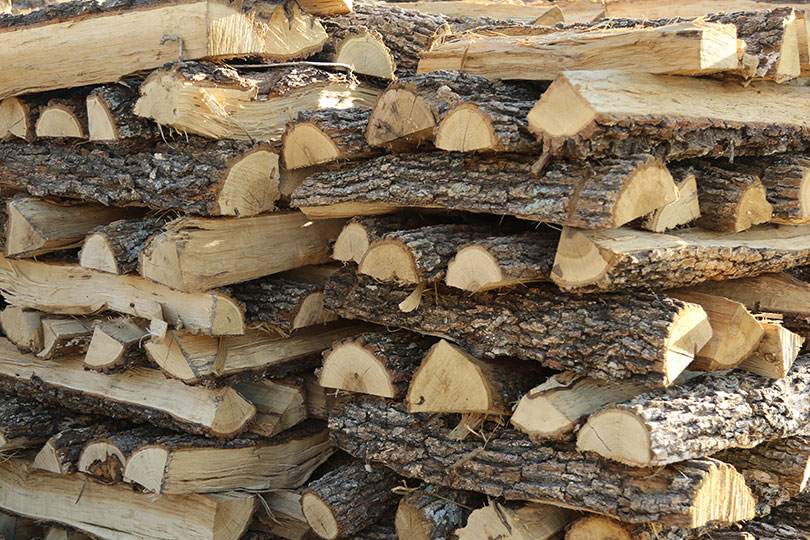By Jennifer Dorsett
Field Editor
Firewood. It’s the star of every cozy night in front of the fireplace. Essential fuel for the tender, slow-cooked pit barbecue so loved by Texans.
What’s a weekend at the deer lease without a campfire to sit around and trade hunting stories? And s’mores just don’t taste the same without that toasty char, courtesy of a summer bonfire.
It’s clear that firewood plays a major role in some of our favorite memories. But that tradition could be at risk if Texans don’t handle firewood properly.
Diseases and pests are easily transmitted by moving fallen trees and cut firewood.
Remember: buy it where you burn it. The best option is to select firewood that comes from within a 50-mile radius of where it’s going to be burned. Don’t transport wood from the hunting camp to the house or vice versa. Harvest the wood nearby or buy firewood from a reputable source.
Firewood from other areas—including other counties in Texas—can spread oak wilt disease, a devastating fungal infection that is fatal to oak trees.
Oak wilt is prevalent in Central Texas, according to the Texas Forest Service. There are now 76 counties across the state with confirmed cases of oak wilt, mostly along the I-35 corridor.
The Bretziella fagacearum fungus inhibits the tree’s ability to conduct water through its vascular system, causing the tree to die. All oaks are susceptible, but red oak species are affected more dramatically, often completely succumbing to the disease in as little as three months.
People often unknowingly transmit oak wilt to new areas when cutting up fallen trees and taking the wood home for firewood.
And there are other pests, too.
The red imported fire ant and emerald ash borer are invasive species with established quarantine zones in Texas.
The Texas Department of Agriculture prohibits moving plant materials, such as firewood, from inside quarantined areas to prevent the spread of these pests.
Buying firewood
- Look for well-seasoned firewood that was cut in the spring or early summer. In addition to burning more efficiently, the hot Texas summer usually destroys fungus and other diseases in cut wood as it dries.
- Seasoned wood is typically dry, with loose bark and cracked ends. If the bark is hard to peel back, it’s probably still wet.
- Well-seasoned wood doesn’t smell like wood. Most of the scent of fresh-cut wood is caused by moisture.
- Seasoned wood should also have a slight gray tone. The more sun exposure it has received, the better.
Storing firewood
- Store firewood at least five feet away from the house. Stacking it right against the structure is an open invitation to termites and other pests to come inside.
- Try not to store firewood directly on the ground. Even a couple of inches of elevation can be useful in preventing ground moisture from getting into the wood. A lack of moisture is key to better burning.
- Store firewood out of the shade and with enough space for air to circulate.
- Alternating rows between length and width allows for good airflow and creates a more stable structure than stacking it all one direction.
- Keep the woodpile four feet high or less. Anything taller can become unstable and cause injuries if it falls.
- If the wood came from an unknown source or was transported from far away, cover it with plastic sheeting and bury the edges underground. This will keep any insects or diseases from inadvertently spreading to nearby live trees.
By implementing these practices when buying and storing firewood, people are ensuring future generations of Texans can enjoy making memories around the fire, too.
For more information on storing and handling firewood, visit https://www.dontmovefirewood.org.
If oak wilt is suspected on area trees, Texans can contact a local Texas A&M Forest Service Oak Wilt forester.

